- Home
- Patrick Robinson
Kilo Class am-2 Page 23
Kilo Class am-2 Read online
Page 23
The first “grave” took them forty minutes to dig. The second took an hour. The rain, if anything, grew worse. It was 0330 and there was still another hole to dig. Fred Cernic was spent. Ray Schaeffer was half-dead, and Rick Hunter worked on. Cut and scratched by the foliage, bloodied and shivering, they were covered in mud, their hands too slippery to hold the shovels efficiently. Only one man was still pulling the wagon. And Rick dug on without complaint, understanding that when a highly trained SEAL can offer no more, there is simply no more to offer.
Rick crashed the shovel into the ground, hauling out the earth, trying to find a rhythm, his breath now coming in short angry bursts, his rib cage heaving, the pain in his massive arms excruciating from the lactic acid buildup in his muscles. He was operating on the edge of blackout now, and he knew it. Rick Hunter tried talking to himself, snapping out the word “NOW!” every time his shovel hit the ground. He worked like this for three minutes before he became conscious of another shovel slamming into the earth alongside his, and through the sharp light of the Chief’s lowered flashlight he could see the pale face of Ray Schaeffer, still fighting, still trying to help. Covered from head to foot in mud and blood, flecks of white spittle coming from his mouth, his lips drawn back from his teeth with effort, Ray Schaeffer was alone now with his god, still praying softly that he would not let the SEALs down. They rammed their shovels into the ground alternately, each of them drawing strength from the presence of the other.
And they kept going like this, shoveling steadily, tackling the pain barrier, for five more minutes, before Ray Schaeffer collapsed facedown into the trench he had just dug, his head sinking in the five inches of rainwater that had gathered there. Chief Cernic came out of the dark like a panther and dragged Ray’s head clear. Rick Hunter dropped his shovel and helped to carry the younger Lieutenant out.
They propped him against a tree while the Chief grabbed the jackets and wrapped all three of them around the unconscious SEAL. Ray was beyond brandy, he needed a doctor, or a hospital, and there wasn’t one. However, his breathing was steady, and Fred Cernic left him covered and picked up the second shovel. It took twenty more minutes to complete the “graves,” and they rolled the canisters into position carefully, before tipping them into the holes, with their long doors uppermost. While Lieutenant Commander Hunter fell back exhausted, conscious but battered, the Chief checked the contents of the canisters, rescued three towels, locked the doors, and began the much easier task of covering them with the loose soil.
The holes required only about one-third of the available earth, and as the Chief began to tackle the last one there was one hell of a pile of soil still left. When he was almost through he dropped one shovel into the last “grave” and then covered it. He and Rick then took turns making the mound of spare earth smooth above the precious buried stockpile of SEALs demolition kit. Afterward they brought in piles of dead leaves to make it look like a natural mound. Finally, they dragged the big bush back into place and replanted it to disguise the disturbed area. It was almost 0500 when they laid the last shovel into the loose earth, deep under the bush, and camouflaged it with soil and leaves. Rick checked the burial position with the GPS as the rain dripped steadily down through the trees.
“Okay, Chief, let’s go,” said the team leader. “You pack up the clothes and towels into the garbage bags, and we’ll head back to the road as fast as we can.” At which point, he walked back to Ray, zipped up his jacket, and lifted him up and over his shoulders, walking forward on course 140.
They made the return journey faster than they expected; Ray regained consciousness and insisted on walking unaided. It was 0534 when they reached the dirt road. They could see the lights of the Mikhail Lermontov almost half a mile away, and they stood in the rain for ten minutes, trying to wash off the mud and blood. The towels felt like heaven, and they worked beneath an ancient pine tree, getting dry. They then put on their shirts and sweaters, which had never been wet, then their trousers, and dry socks and street shoes, then their parkas and hats. They put the wet towels and three pairs of mud-caked sneakers into a garbage bag along with a couple of small rocks, and heaved it into the lake. Rick recorded their GPS position, the landmark for their next visit.
At 0615, looking more or less normal, they strolled back up the gangway into the darkened ship. A seaman on duty was asleep in a deck chair, and the three SEALs walked silently past to their cabins. They were not seen by their fellow passengers.
There was an envelope pinned to Lieutenant Commander Hunter’s cabin door with the name “Ricky” on it.
“Guess who, lover boy?” grinned Fred Cernic.
Rick was too tired to respond, too tired even to speak. He grabbed the envelope, opened the door, and fell on top of his bed. The other two walked on to the adjacent cabins, and as they got there, Lieutenant Schaeffer turned to Fred and said, “I’m sorry. I’m really sorry.”
Chief Petty Officer Cernic turned to face the junior officer, and said, in a barely audible whisper, “You didn’t let anyone down, sir. I’ve known men who’ve been decorated for a lot less.”
8
Fred Cernic was essentially a prisoner in his cabin. He had not been allowed out all morning, and a steward had delivered his lunch of potato soup, rare sirloin steak, beetroot, cheese, black bread, and a pot of coffee. He ate alone, unlike the other two SEALs, who were busy regaling Jane Westenholz and her daughter with a succession of truly majestic lies.
“…And then we met these two Russian farmers along the road there, and they invited us into their house for a glass of homemade vodka…Of course before we knew it, Fred had got ahold of a second bottle and drunk it…started falling about all over the place…In the end we had to lock him up in a barn until he passed out, then Ray and I managed to drag him back here in the small hours. The two Russian farmers were pretty damned good about it.”
“Oh, how perfectly awful,” said Jane. “He seems like such a nice man.”
“Jane, I’m telling you, you wouldn’t recognize him when he gets into the booze. Part of the reason we brought him up here for this little trip was to get him away from the bars at home…never thought he’d manage to find a bottle of homemade vodka right out here in the middle of nowhere.”
“Are you sure he’s okay?”
“Yeah. He’s just sleeping it off right now. Didn’t want any lunch. I guess he’ll be fine by the end of the day…but it might be better if we had dinner separately tonight. I just don’t want him near wine or anything.”
“Oh, yes. I understand, Ricky. And of course I won’t mention anything if we meet later, but I’m glad you told me about it…By the way, did you get my note?”
“Sure did, ma’am. And I appreciate what you wrote about me. Maybe we could get together for a drink later tonight, after we get Fred back to bed.”
Jane Westenholz smiled and touched the SEAL Commander on the back of his hand. “Then,” she said, “you can tell me what you do with your life back home in the States. I think you’ve been a teeny bit secretive about it.”
“It’s pretty damned dreary, Jane,” said the Lieutenant Commander. “But I’ll be real happy to give you the highlights.”
He smiled his big farmboy smile, and he and Ray Schaeffer made their way out of the ship’s dining room. The Mikhail Lermontov ran on south down the middle of Lake Onega, making an easy twenty-five knots through flat water. She would dock at the Naberuzhennoe in St. Petersburg tomorrow afternoon.
Hunter made his way up to the ship’s communications office and asked to send a cable to the United States. “Just to let the folks know we’re okay,” he said, grinning at the dark-haired girl operator who handed him a form. He addressed the cable to Sally Harrison, jotted down the phone number with its 301 area code, and then carefully wrote, “Lovely time. Freddie fine. Rick.”
He handed the form to the girl with a five-dollar bill, and asked her to send it off as soon as possible.
Two hours later, at 0600 Eastern Daylight Time, Lie
utenant John Harrison answered the phone in Admiral Morris’s office, six thousand miles away, and wrote down the message he received from Cable and Wireless. He had no clue as to its meaning but had been instructed to call Admiral Morgan immediately, should he receive a cable from “Rick.”
He picked up the direct line to the Admiral, who was in his office, waiting. “Short cable from Rick, sir,” he reported.
“Beautiful,” said the Admiral, putting back the phone. He stood up and punched the air with delight. “Those guys! They just delivered the bacon!” he exclaimed. “I’ll show those Russian pricks they can’t fuck with me!”
Back in Russia, the Lermontov steamed on, cutting her speed as she entered the waters of the Svir River, which joins Lakes Onega and Ladoga. The tour ship spent most of the afternoon and evening making the hundred-mile journey along the winding waterway. The following morning the ship ran across the wide southern waters of Lake Ladoga and turned into the Neva River for the final thirty-mile stretch up to the port of St. Petersburg.
Lieutenant Commander Hunter and his men said good-bye to Jane and her daughter as they disembarked. They were met by the driver of an unmarked car, which drove them to the airport. Inside an hour, they were on a Finnair flight to Helsinki and touched down before dark. Jane Westenholz would never know who they were.
The two Tolkach barges were observed by America’s KH-III satellite as they moved slowly north up the Volga. Captain Igor Volkov, master of the articulated double barge, led the way through the channel. His twenty-four-year-old son, Ivan, was at the wheel on the for’ard rudder, nine hundred feet in front of him.
On the evening of April 25 they had arrived at the cement town of Volsk. Its factory chimneys belched yellowish smoke and dust across the sky. The chronic pollution could be seen in the orange glow of the streetlights and was even visible in the photographs Admiral Morris studied in faraway Maryland.
The Tolkach and its six-hundred-foot-long consort stretched for over five hundred yards of the Volga as they moved in stately procession through the heavily industrialized reaches of the river on the approach to the imperial university town of Kazan.
On April 27 they had rolled past Syrzan, a town of old rusty chimneys and sprawling brick factories that looked like a throwback to the early days of the Industrial Revolution. The picture definition was poor because of occasional rain, but the eye of KH-III was good enough. “They’re gonna make Nizhny by May sixth,” George Morris told Arnold Morgan.
Four days later, on May I, at the approximate time the SEALs had been fighting their way through the rain-swept woods of Lake Onega, the giant barges had reached Ulyanovsk, the birthplace of Vladimir Ilyich Lenin. It was night as they hove into sight, and Captain Volkov could see the red neon nameplate stark above the new river station. They were not stopping, and he gave a short blast on the ship’s horn as he passed. Scatterings of people stood and gazed out across the sandy shallows into the great black flow of the central stream of the river, where the barges left hardly a ripple.
They were a hundred miles short of Kazan, and these miles would be traversed in wide waterways — up to eighteen miles across — as the Volga turns into a virtual inland sea. At the town of Zaton the barges made a ninety-degree turn for the port of Kazan, which they made in the small hours of May 3. Just beyond there they swung hard left, along the now-narrowing river, and began their nonstop run to Nizhny Novgorod, 250 miles away.
The US satellites charted their progress most days. Late at night George Morris and Arnold Morgan would examine the photographs of the three Kilo class submarines in Red Sormovo and the progress of the Tolkach barges. There was still some scaffold left on Kilo three, but the two American admirals assessed the first two to be almost complete.
All the way along to Nizhny, the Volga is flanked by green rolling hills and woods. Intermittent villages set in the folds of the hills are bright in the morning light, and almost invisible in the misty rain that sweeps through every few days in spring. The eastern shore of the river is flatter than the more hilly Asian bank, but the two diverse green plateaus along the shallow, slow flowing stream of the Volga are a feast of glorious rural landscape. The presence of the giant barges with their military overtones was hideously intrusive.
In the small hours of May 7 Captain Volkov steered around the Strelka and moored alongside the loading quay at the junction of the Volga and the Oka Rivers at Nizhny Novgorod. Both barges made a huge 360-degree turn in the mile-wide waterway and came up in the shadows of a forest of dock cranes. Behind them stood the great Cathedral of Alexander Nevsky. With the dock on their starboard side and the waters of the Oka to port, the barges now faced northeast. They were less then four hundred yards from the three Kilos.
At Fort Meade, Admirals Morris and Morgan peered at the satellite pictures.
“How long, George? How long before they leave?”
“Well, if we assume they will go together, the most significant factor is that the third Kilo still has some scaffold. I’m not sure how long it takes to load and secure something that big onto a barge, but it’s gotta be a day for each one, and they are not yet down at the loading dock. Right now I’d say the earliest those transporters could start moving would be ten days from now — say May seventeenth. But if you want my best guess I’d still say first week in June.”
“Any idea how they load ’em?”
“They move the hulls around on the land the same way we move our big boats, on a multiwheel trolley system, running on rails over some very hard standing. We use hydraulic lifts to put the hulls into the water, rather than onto floating barges. I’ve never seen anyone do that, but I guess it’s possible. We might even learn something if we get a photo at exactly the right moment.
“We have seen them put submarines onto those oceangoing freighters they sometimes use…That’s when they flood the ships down into the water and float the submarines onto the decks, same system as a floating dock. These barges look a bit different, but they must do it the same way. I don’t see any other possibility.
“The Kilos will have to be lowered into the water, and then floated over the barges. Then the barges will pump out and lift the submarines clear of the water. I’d say the whole process is going to take a couple of days.”
Arnold Morgan thought quietly to himself.
“Right. Then we got five days running time at five knots to make the journey up to the middle of Lake Onega. The very earliest I’m going to see them in the right area is going to be May twenty-second.”
He calculated that would require a five-day tour boat with the scheduled Green Stop at the north of the lake at around 1900 to 2100 on that same night — a tour boat that had left St. Petersburg three mornings previously on May 19, and which would meet the submarines on the waters of Onega in the afternoon of May 22.
“Just gotta make sure we have a block of rooms on one of those ships every day from May nineteenth,” he concluded. “Once we get that in place, the only thing we need to do is to get the travel agent to change the names on the day we send the team in.”
The CIA would now take over the nuts and bolts of the operation, organizing travel agents to book two suites on the top deck, plus one extra cabin, for one ship every day between May 19 to June 10. The entire plan was carried out from Langley, and the space was booked through the United States offices of the Odessa-American Line. As long as the Kilos stayed in Red Sormovo, a succession of young American executives would be enjoying nice vacations touring Russia’s canals and lakes.
By May 31, almost fifty staff members from various consulates, embassies, and private corporations had made the journey up to the gateway of the Belomorski Canal. And more were scheduled. Except that on June 1 everything changed, fast. The first Kilo was photographed by KH-III moving down to the loading dock on rails. Twenty-four hours later a new picture showed it on board the lead Tolkach. There was suddenly no scaffold whatsoever on the third Kilo.
“Christ,” said George Morris. “They’re on
their way. Looks to me like June third or fourth departure.”
Arnold Morgan alerted Admiral Bergstrom in Coronado, who confirmed that the SEALs were ready to go at a moment’s notice — he just needed Morgan to let him know the day his men were to leave St. Petersburg, and the name of the ship. Meanwhile he would move his SEALs across the Atlantic and into a hotel in the busy Russian seaport immediately.
Lieutenant Commander Rick Hunter’s team was ensconced in the Hotel Pulkovskaya near the St. Petersburg Airport. Lieutenant Ray Schaeffer was with him, but Chief Petty Officer Fred Cernic had remained in California. Two other SEALs, a thirty-year-old Petty Officer, Harry Starck, and a much younger noncommissioned seaman, Jason Murray, were already in place. The CIA officer, Angela Rivera, a slim olive-skinned veteran in her midthirties, had arrived on May 29 with a large bag of theatrical makeup and a box full of wigs.
The Tolkach barges were loaded by the afternoon of June 4. At first light on the morning of June 5 four tugs dragged the transporters and their $900 million cargo off the Red Sormovo moorings. The massive engines of Captain Volkov’s mighty barge churned up a seething maelstrom in the middle of the Volga junction and slowly pushed their way forward, followed by the six-hundred-footer, fifty yards astern.
The usual complement of Russian military personnel was on board. Three armed guards worked shifts on each of the three barge sections; one of them was on duty at all times. The lieutenant in charge stayed with Captain Volkov. When they reached the White Sea, the Kilos would proceed under their own power, on the surface, to Pol’arnyj for trials and workup. Then they would set off on their journey to China, escorted the entire way by four heavily gunned Russian antisubmarine frigates carrying guided missiles, torpedoes, antisubmarine mortars with a six-thousand-meter range, and racks of depth charges.

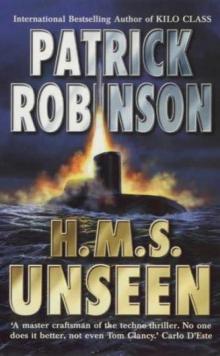 H.M.S. Unseen am-3
H.M.S. Unseen am-3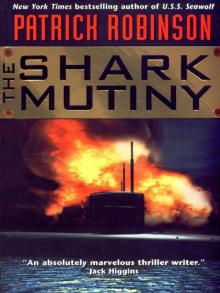 The Shark Mutiny (2001)
The Shark Mutiny (2001) Hunter Killer am-8
Hunter Killer am-8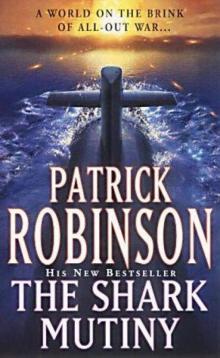 The Shark Mutiny am-5
The Shark Mutiny am-5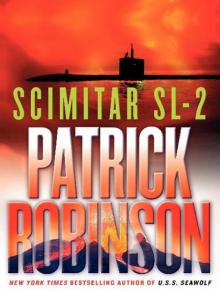 Scimitar SL-2
Scimitar SL-2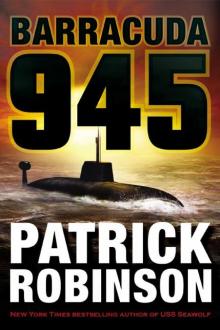 Barracuda 945 am-6
Barracuda 945 am-6 Hunter Killer
Hunter Killer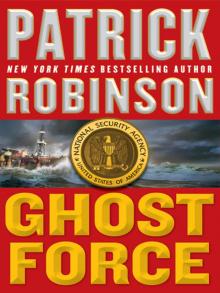 Ghost Force
Ghost Force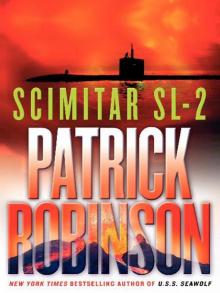 Scimitar SL-2 (2004)
Scimitar SL-2 (2004) Kilo Class am-2
Kilo Class am-2 The Lion of Sabray
The Lion of Sabray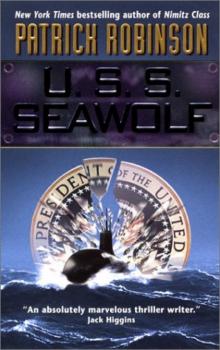 U.S.S. Seawolf am-4
U.S.S. Seawolf am-4 Ghost Force am-9
Ghost Force am-9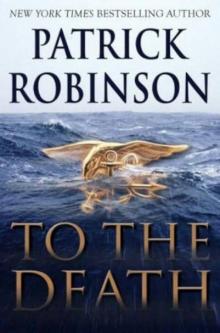 To the Death am-10
To the Death am-10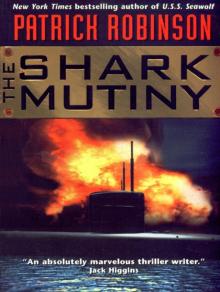 The Shark Mutiny
The Shark Mutiny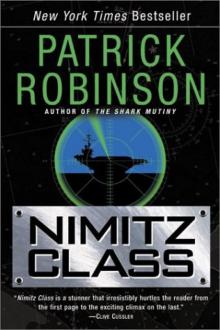 Nimitz Class am-1
Nimitz Class am-1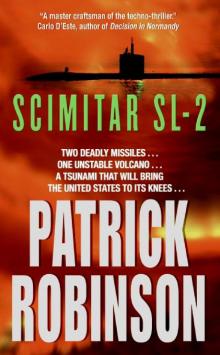 Scimitar SL-2 am-7
Scimitar SL-2 am-7 Barracuda 945
Barracuda 945 Intercept
Intercept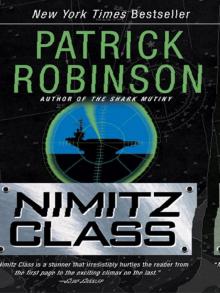 Nimitz Class (1997)
Nimitz Class (1997)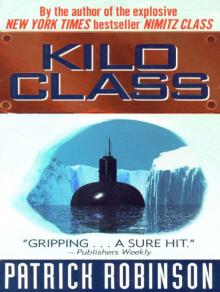 Kilo Class
Kilo Class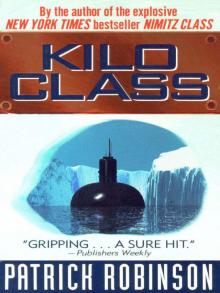 Kilo Class (1998)
Kilo Class (1998) Diamondhead
Diamondhead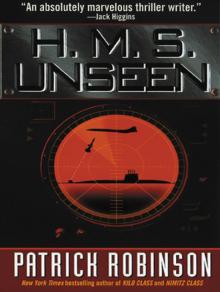 H.M.S. Unseen
H.M.S. Unseen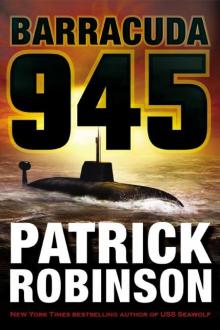 Barracuda 945 (2003)
Barracuda 945 (2003)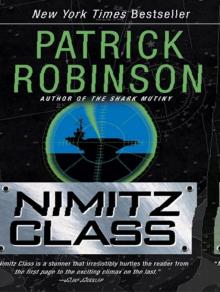 Nimitz Class
Nimitz Class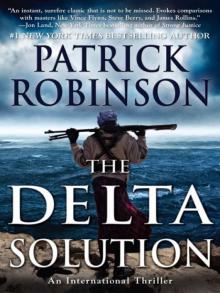 The Delta Solution
The Delta Solution U.S.S. Seawolf
U.S.S. Seawolf